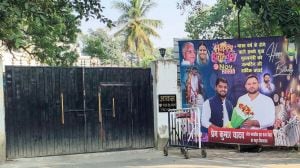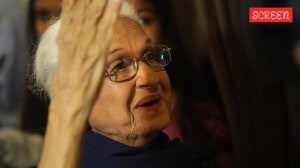The BJP had faced consecutive drubbings in the Delhi Assembly polls of 2015 and 2020 at the hands of the Aam Aadmi Party (AAP), including dismal showing in the 18 rural seats.

Head of the Delhi BJP OBC Morcha Sunil Yadav told The Indian Express that the party adopted a different strategy and cornered roughly half of the OBC vote in these areas. “We created 24 groups of 52 OBC groups like Jats, Gujjars, Yadavs, Sainis, Prajapatis and Ramgarhias. This roughly accounts to 50% of the population and concerns of each community were addressed,” he said.
Story continues below this ad
Yadav said around 24,000 people were reached via sammelans (large meetings) apart from drawing room meetings of 10 people each. “Around 65,000 people uploaded these meetings and these reached an estimated 1 lakh people,” the BJP leader said.
Ahead of the polls too, the BJP got a shot in the arm after leaders of 360 villages of Delhi, in a mahapanchayat on December 22 last year in Mangolpuri Kalan, departed from their earlier stand of boycotting the polls and decided to “support the party that would fulfil their demands”.
 BJP leaders celebrate after winning Delhi Assembly polls. (Express photo by Praveen Khanna)
BJP leaders celebrate after winning Delhi Assembly polls. (Express photo by Praveen Khanna)
On February 1, days before the February 5 polls, Surender Solanki, head of the “Palam 360” – which claims to represent all 360 villages and the 36 communities inhabiting them – met Union Home Minister Amit Shah and extended support to the BJP.
The BJP’s tweaked strategy as well as the support of the “Palam 360” seemingly bore fruit as the party won 13 of the 18 seats, six of them with an over 50% margin, as against the lone seat it won five years ago.
Story continues below this ad
The victory was so resounding that a section of BJP leaders, as well as Solanki, have demanded that the next Chief Minister be chosen from the rural belt. “AAP ka safaya ho gaya hai, kyunki AAP ne humari baatein nahi suni… Hamein lagta hai Dilli dehat se banna chahiye koi CM (AAP was swept away because they didn’t listen to us… We feel someone from rural Delhi should become the CM),” Solanki said.
 Prime Minister Narendra Modi celebrates after BJP swept Delhi Assembly polls. (Source: X)
Prime Minister Narendra Modi celebrates after BJP swept Delhi Assembly polls. (Source: X)
In terms of vote share too, the BJP saw a vastly improved performance in the rural belt, garnering 44.68% of the votes as compared to the 37.93% it got five years earlier. On the contrary, the AAP saw its tally dip from 17 to five in these seats, while its vote share fell from 56.23% in 2020 to 43.03%.
The BJP’s candidate selection too reflected its changed strategy. The party’s giant killer and Jat face Parvesh Verma, who defeated AAP chief Arvind Kejriwal from New Delhi and is seen to be a frontrunner for the CM’s post, hails from the area. He has previously served as the MP of West Delhi, which encompasses rural seats like Madipur, Matiala and Najafgarh.
In the 2013 Assembly polls, he had successfully contested from Mehrauli, another seat falling in the rural belt. Parvesh’s father and former Delhi CM Sahib Singh Verma too represented the Outer Delhi Lok Sabha constituency, which falls in the rural belt, between 1999 and 2004.
Story continues below this ad
The party fielded another Jat face and former Delhi minister Kailash Gahlot, who quit the AAP months ahead of the polls, from the Bijwasan seat. He defeated his former party colleague Surender Bhardwaj by over 11,000 votes while in the SC-reserved seat of Madipur, the BJP’s Kailash Gangwal defeated former Deputy Speaker Rakhi Birla.
Though Ramesh Bidhuri, the BJP’s Gujjar face, narrowly lost to former Delhi CM Atishi in Kalkaji, it showed that the party was focused on the Jat and Gujjar populations in the 18 seats of the rural belt.
Solanki now hopes that the new BJP government will increase circle rate from the existing Rs 53 lakh per acre to Rs 5 crore, abolish house tax, give ownership rights of plots allotted to landless workers, and repeal Sections 33 and 81 of the Delhi Land Reforms Act.
About his method of campaigning, Solanki claimed reaching people with the message was key. “I have five WhatsApp groups which have around 5,000 members from the villages of Delhi. Apart from this all the 360 villages have WhatsApp groups of their own. In an hour I can make a message reach all the villages,” he said.



 BJP leaders celebrate after winning Delhi Assembly polls. (Express photo by Praveen Khanna)
BJP leaders celebrate after winning Delhi Assembly polls. (Express photo by Praveen Khanna) Prime Minister
Prime Minister 





























